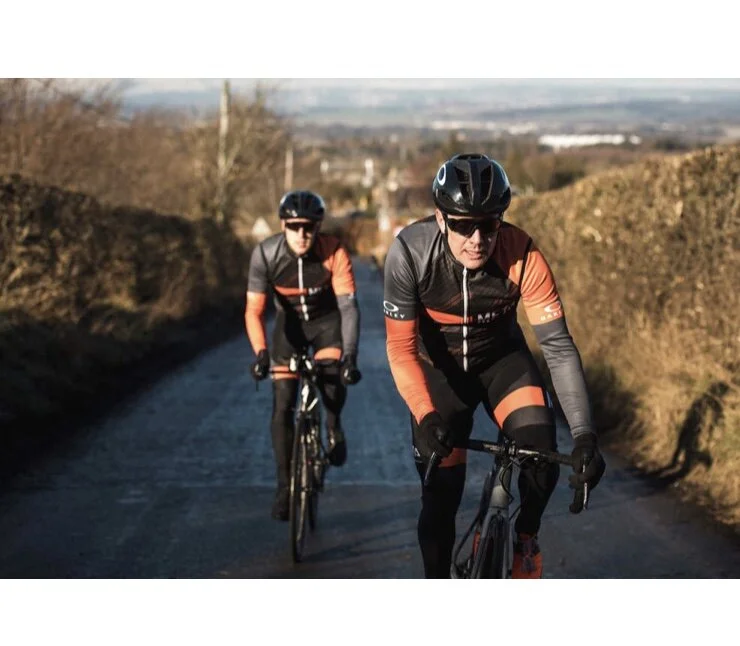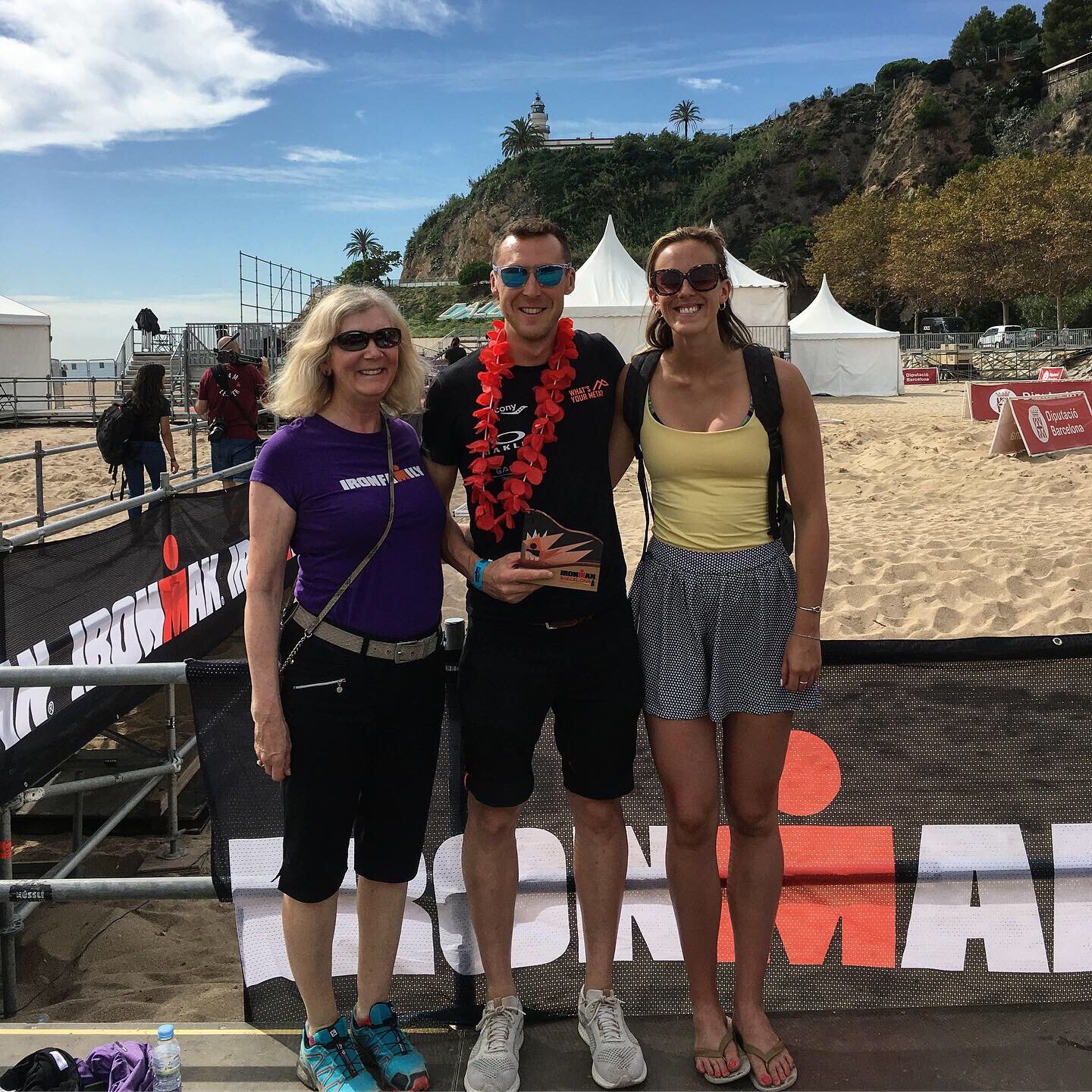Everything there is to know about Zone 2
Zone 2 training is a popular discussion point between coaches and athletes when it comes to training. There seems to be an overwhelming lack of clarity as to what it is and what the benefits of training in zone 2 are. Athletes commonly ask:
· What is zone 2 training?
· Why am I doing it?
· This training is too easy/slow?
So, let’s delve into everything there is to know about zone 2. By the end of this article, you should have a clear understanding of what it is, why you need to train there and what the benefits are.
What is zone 2?
Let’s start with a bit of biology. We create movement by converting chemical energy into mechanical energy. So, to move, we need to break down substrates (fat and/or carbohydrate) into energy (ATP – energy currency of the body) to allow muscle contractions to happen. Movements that should require low levels of power output, like walking for example, require relatively low levels of energy supply. When force production is low, we utilise type I muscle fibres. The reason for this is these fibres contain the greatest number of mitochondria. Mitochondria are like the energy factories of the body. They are able to break down subcutaneous fat and convert it into energy (ATP) so our muscles can contract. This is a very beneficial system as we have an abundance of fat stored in the body (tens of thousands of calories worth), so we can fuel movement and function for very long periods of time.
As we start to move at greater intensities, our muscles need to produce more force to aid the movement. So, if you started to run at a light effort, your muscles would start to contract faster and there would be a greater demand for energy. Exercise can be continued to be fuelled by high levels of fat metabolism until the point at which the energy demand to facilitate movement outstrips the supply of energy. The point at which fat metabolism drops will depend on the training status of an individual. At this point, type IIa muscle fibres start to facilitate more of the energy production. The critical factor here is that glycogen starts getting broken down at a faster rate to facilitate muscle contraction. Simply put, type IIa fibres produce more force than type I fibres and are capable of metabolising glycogen as an energy source. Glycolysis (breakdown of glycogen to energy), yields more energy and at a faster rate than fat metabolism. Type I fibres and fat metabolism cannot fuel exercise intensity alone anymore.
Zone 2, in an optimally trained endurance trained athlete, is where there’s a significantly greater contribution of aerobic fat metabolism to overall energy production than there is from aerobic glycolysis*. An athlete’s fat max is the intensity at which they oxidise the highest amount of fat. This can be shifted to greater levels of work as an athlete becomes more efficient at utilising it as a fuel source. This typically occurs in zone 2 in well-trained athletes.
Please note, as a well endurance trained athlete moves into zone 3, they will continue to metabolise fat for energy, just at a ,much lower rate. This is very important to understand as athletes (and coaches) tend to think of energy production as absolutes when energy supply actually works on a continuum. There is also a lot of confusion about what aerobic exercise is. Zone 2 should be aerobic because fat should be being broken down in the presence of oxygen. Zone 3 should also be aerobic as carbohydrate should be being broken down in the presence of oxygen. *The breakdown of glycogen with oxygen is called aerobic glycolysis. As exercise intensity increases further, anaerobic glycolysis starts to take place (the breakdown of glycogen without oxygen). Even at this point, the majority of energy production will be from aerobic metabolism. Pure anaerobic exercise would only be an extremely short sprint that would be as little as 10-12seconds. We’re not going to talk about the upper zones today but hopefully that provides some clarity as to what aerobic exercise is and that you shouldn’t think of exercise as being aerobic or anaerobic.
The reality is that individuals will vary in how much fat and carbohydrate they metabolise in zone 2. Some athletes might metabolise very high levels of carbohydrate in zone 2 and oxidise very little fat. This will lead to sub-optimal performance in long distance events, like Ironman triathlon. We should be striving to metabolise a significant amount of fat in zone 2. You’ve hopefully now got a visual of what zone 2 training should be, low intensity aerobic training that promotes a high degree of fat oxidation. We’ll now explain in more depth why you want to train this zone and what the benefits are for success in endurance sport and general health.
Why do you want to train in zone 2:
We’ve discussed that mitochondria break down fat for energy and we’ve also discussed that fat metabolism can sustain movement for very long periods of time. What we haven’t mentioned is the challenges we face. Subcutaneous fat has to travel quite a long way to the mitochondria to be broken down for energy. It also takes quite a long time to break down and doesn’t yield that much energy (ATP), in comparison to aerobic glycolysis. Our bodies typically prefer to burn glycogen, so why don’t we just use that? Well we only have a finite amount stored in the body, about 90minutes worth, and we can only process so much exogenous carbohydrate when exercising, particularly in long-distance events. So, to be successful at endurance sport, you have to be efficient at metabolising fat. Zone 2 training, is the most effective way to increase mitochondria density, size and functionality. Mitochondria functionality is the single most critical factor to how well someone can perform in a long-distance endurance event. It doesn’t matter if your FTP is 250w, if your FAT MAX is 150w, you’re going be to nowhere near your potential in something like an Ironman. The key goal of lower intensity zone 2 training, is to improve mitochondrial function and improve fat metabolism. Zone 2 training usually feels very easy, or too slow, because the ability to produce greater work loads via fat metabolism hasn’t been developed.
There’s another major benefit of improving mitochondrial function. We’ve mentioned already that at greater intensities we’ll start to break down glycogen for energy. A by-product of glycolysis is lactate production. Now a lot of people mistake lactate for causing pain, it doesn’t. During anaerobic glycolysis, acid (hydrogen) is produced. It’s the hydrogen which causes the pain and not the lactate. Coming back to lactate, it’s actually a very good fuel source as it doesn’t need broken down into energy like substrates, it can be used straight away. Lactate is used by every cell in the body, including the heart and brain, but critically by the mitochondria. The greater the mitochondrial functionality and density, the greater the ability to utilise lactate as a fuel source and therefore clear it from the blood. One of the biggest differences between the best athletes in the world and the rest, is their immense ability to metabolise lactate and clear it. This prevents it from building up and means they can sustain incredible levels of power or speed with little accumulation of lactate.
This is where the phrase “you have to slow down to speed up” comes from. Literally going slower, and training zone 2, will increase your capacity to go faster because you are able to utilise lactate and clear it from the blood faster. You can also sustain greater workloads via fat metabolism and get closer to performing at race intensity in longer distance events with the majority of energy contribution coming from fat oxidation. Ironman racing will be very much performed in zone 2 to zone 3. You can see why training intensity is so critical in being able to perform well in events of that nature. If you can’t exercise at your target pace with high levels of fat metabolism, you have no chance of competing a long distance event at that pace.
Two of the most common phrases you’ll hear from endurance athletes is “I just always run at the same pace” or “it doesn’t matter what I do, I just run the same time”. Without being overly critical, this happens because they haven’t trained their systems effectively. Well-trained athletes display an amazing range in power or pace because they have trained their body to produce energy effectively. At lower efforts, they metabolise fat very effectively. Dr Iñigo San Millán, who works with TDF cyclists, referenced that he’s tested riders who can produce 300w in zone 2, and that weigh 60-65kg. That’s nearly 5w/kg. At greater intensities, they can utilise lactate very efficiently and clear it faster, meaning they can continue to push to greater levels. If you find that you can’t elevate your pace and that you’re stuck in the same gear, you probably need to have a very good look at your training intensities. Neglecting zone 2 training because you think it’s too easy, will hamper your ability to progress and perform at harder intensities.
It takes time:
Many athletes are impatient or don’t take the time to understand what’s going on. I can completely understand why someone might think it’s counter intuitive to slow down in order to get faster if they don’t know the mechanisms at play. Many people go through life thinking that working harder and doing more will get you where you want to go faster. This is true to an extent with endurance training, but training smarter will always win. I’ve tried to explain the science in this article to give some clarity about why going slower is so vital to performing well at long distance events. What I haven’t explained is the length of time it takes to train this system.
If you take something like Ironman. Many athletes enter an Ironman about a year before, or start to think about their training about year in advance. It’s sometimes less. Without putting people off, this is asking a lot of the body. Developing the mitochondrial efficiency to perform well in an event of that distance takes a long time. When I say “perform well”, I mean being able to push the whole way through the event. It takes a long time to develop the mitochondrial efficiency to be able to actually race an Ironman. There are unfortunately absolutely no shortcuts here. It is fantastic that these events make dreams come true and give people the opportunity to do something which challenges them on belief. I just think it’s important that people realise what they’re signing up to and they need to be realistic about their expectations. It’s not necessarily healthy to put your body through that stress if it can’t cope with it. I raced my second Ironman, when I was 21 years old, in under 10 hours at Ironman Austria. It took me another 6 years and 5 more Ironmans to properly race one from start to finish. If I’m being very critical, it wasn’t until my 10th Ironman in 2019, when I went 8.42, that I could push every single meter of the race.
It wasn’t so long ago that a marathon was seen as something superhuman and it’s just been completely normalised in people’s minds because of how many people do them now. Just because people are racing longer distances and participations levels are increasing, doesn’t lessen the physiological challenge of an event. It’s really important that sport plays a healthy part in your life and improves the quality of it. Taking the time to train well, and complete events when you’re properly prepared to do so, is very important to longevity and happiness.
Taking it in a slightly different route, mitochondrial health is also essential to overall health. People who display mitochondrial dysfunction, have a lesser ability to metabolise fat as fuel, even in very low intensity exercise like walking. This creates an over reliance on breaking down glycogen for energy, and in some situations, could lead to diabetes and cardiovascular disease. I started coaching because I wanted to help people and that’s what we do at META. I can’t stress how important it is to make aerobic exercise a daily activity. I think events and challenges are great but they’re not always healthy. Too many people take on a challenge, like a marathon, and then revert to their old ways. Starting with why you want to change, and taking the time to understand how your body works, as opposed to thinking about the completion of an event, will be infinitely more powerful than looking at a race date in your calendar.
Tips on how to incorporate zone 2 training into your plan:
· Make the easy training easy and stick to the plan.
· Coaches get so frustrated when they read “I know I went a bit fast but I felt good”. Hopefully you’ll now understand the subtleties between zones and that going a bit harder than you’re meant to will result in you creeping into the wrong zone and missing the whole point of the session.
· If you are well-fuelled and you feel good, moving into zone 3 for a 45-60minute session will feel pretty easy. Stop yourself from pushing the pace when you feel good and stick to the plan.
· Look at the timing of your training. The aim of zone 2 training is to improve fat metabolism. What you eat before a session will have an effect on what your body metabolises. Doing your zone 2 training in the morning, fasted, will help improve fat metabolism and keep you at the right intensity.
· You can also look at you’re fuelling as well as timing. Eating a high fat meal before a session can improve your fat metabolism to a greater degree than doing it fasted. Having some scrambled eggs, or other healthy fats, before a longer zone 2 session could help improve your fat metabolism. Please don’t think that a high fat/low carb diet along will improve your fat metabolism. Training intensity is king. Please note on these points that there are differences between males and females. Some females will not benefit from this approach. Head over to our YouTube channel and watch our insights video with Sarah from Thryve nutrition which focuses on female specific nutrition.
· Leave your ego at the door. If you’re going to train with someone, don’t try and push the pace, or go at their pace, if it pushes you out of zone 2.
· Don’t be afraid of going slow, it takes a long time and a lot of very specific training to develop great mitochondrial efficiency. Be patient and you’ll get there.
· Prioritise the easy sessions. Every time you miss an easy session, you’re missing the opportunity to develop that system.
· Think about long-term success and how you can make your training fit in your life to make it as healthy as possible.
We’ve navigated through pretty much everything there is to know about zone 2 and aerobic training. High quality aerobic training is not only the secret to athletic performance, it’s the secret to a healthy body and mind. You simply can’t put enough emphasis on the importance of training in this way. I wrote this article because many of my athletes ask about it, but I also wrote it for the sheer passion of wanting to help people. If you have any questions about anything in the article, please reach out to us and we’ll be more than happy to help.


